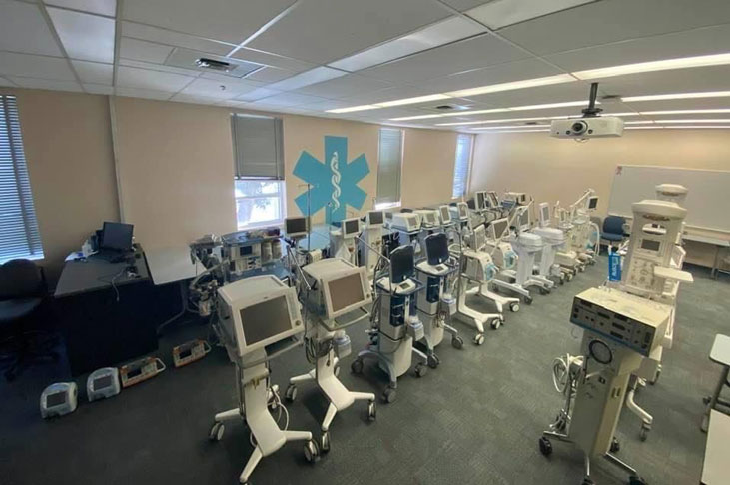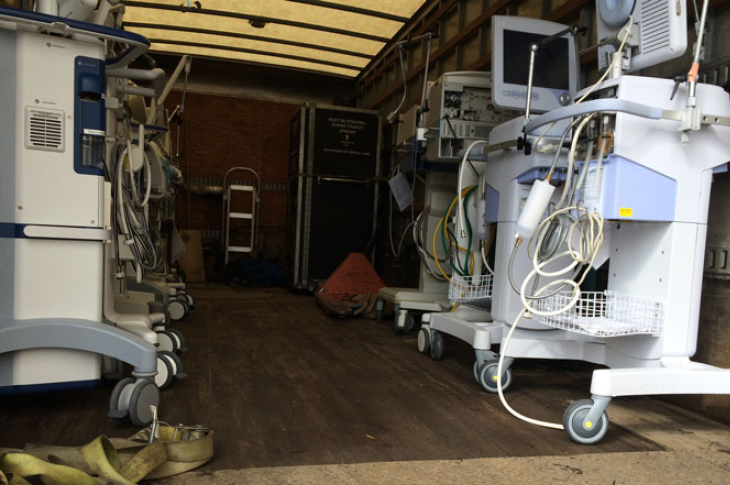Ready to respond

Alumni, students and instructors from one of SAIT’s most competitive health programs know every moment counts. As trained specialists in airway management, Respiratory Therapists are on the front lines supporting COVID-19 patients in hospital emergency rooms and intensive care units here and around the world. Just as every moment counts, every ventilator matters now more than ever.
On Monday, April 6, 13 ventilators from SAIT’s School of Health and Public Safety were transferred to Alberta Health Services, ready for use on the front lines, if needed. Prior to the pandemic, first and second-year students were using the equipment for hands-on instruction with manikins.
“We were having regular meetings with Alberta Health Services about the pandemic, and the potential need for our ventilators came up during a discussion,” says Meena Kumar, Academic Chair, Life Sciences Portfolio. “Since on-campus classes were suspended and moved online, it didn’t make sense to keep the ventilators in an empty classroom.”
Following the call, Kumar’s team prepared the units for pick up.

All hands on deck
Adding to response efforts, an entire cohort will complete the program one week early and some who have completed their clinical requirements are applying for provisional licenses. This will allow them to immediately join the ranks of healthcare workers responding to COVID-19.
Since starting the program nearly three years ago, the graduating cohort has undertaken practicum experience in every semester and participated in human patient simulation labs. Both simulation and practicum components are essential for students to connect theory and skills, preparing for high-stress environments and practicing critical thinking.
"The majority of the respiratory therapists working in Calgary hospitals and the community are SAIT graduates,” adds Kumar. “I'm very proud of our students and faculty who are focused on doing all they can to help during this stressful time.”
Resilience required
This isn’t the first time our students and alumni have faced unprecedented events.
In April 2018, Kelsey Thibault (RT ’16) was called into work when a bus carrying the Humboldt Broncos hockey team collided with a semi-trailer truck. Sixteen people were killed and thirteen injured.
“Dealing with situations like this is easier if you can rely one hundred percent on your skills,” says Thibault. “I knew I was providing the best care to our patients that I possibly could, and it didn’t matter what else was going on around me. It definitely all starts from how well I learned those skills as a student at SAIT.”
Find out more about SAIT’s everyday heroes — alumni, instructors and students using their skills to make a difference on the front lines. Visit sait.ca/bettertogether for more.

Oki, Âba wathtech, Danit'ada, Tawnshi, Hello.
SAIT is located on the traditional territories of the Niitsitapi (Blackfoot) and the people of Treaty 7 which includes the Siksika, the Piikani, the Kainai, the Tsuut’ina and the Îyârhe Nakoda of Bearspaw, Chiniki and Goodstoney.
We are situated in an area the Blackfoot tribes traditionally called Moh’kinsstis, where the Bow River meets the Elbow River. We now call it the city of Calgary, which is also home to the Métis Nation of Alberta.